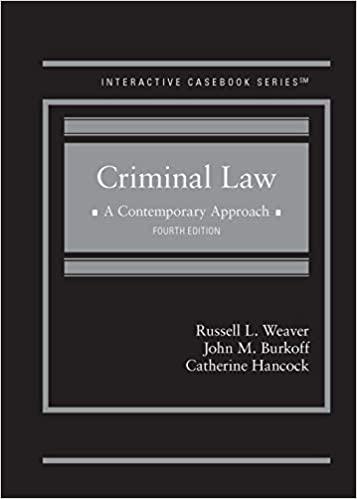Question
1. In Law v. Canada, the Supreme Court of Canada set out a three-part test for showing that a law violates the equality guarantee in
1. In Law v. Canada, the Supreme Court of Canada set out a three-part test for showing that a law violates the equality guarantee in s. 15 (1) of the Charter. Using the concept "Legal Perspective" analyze the three parts of this test. Think about what the test does (its purpose) as well as the role of law in balancing competing rights and freedoms.
2. Using one of the concepts of Legal Thinking, address the argument put forth by the mother that the father's claim under s. 15 (1) of the Charter was 'weakened' because he did not belong to a historically disadvantaged group? Did the challenged sections of the Vital Statistics Act still affect his dignity?
3. Justice Deschamps concluded that the challenged sections of the Vital Statistics Act were unconstitutional and therefore invalid. Using one of the concepts of Legal Thinking, explain why she decided to delay the impact of the decision for 12 months. (Hint: Think about the intention of this decision or its effects on the law).
4. Overall, what do you think the impact of this case was? Using the concept of "Legal Significance" explains the role this case played in terms of shaping Canadian law. Use specific examples to support your response.
Can you please answer them separately
Step by Step Solution
There are 3 Steps involved in it
Step: 1

Get Instant Access to Expert-Tailored Solutions
See step-by-step solutions with expert insights and AI powered tools for academic success
Step: 2

Step: 3

Ace Your Homework with AI
Get the answers you need in no time with our AI-driven, step-by-step assistance
Get Started


